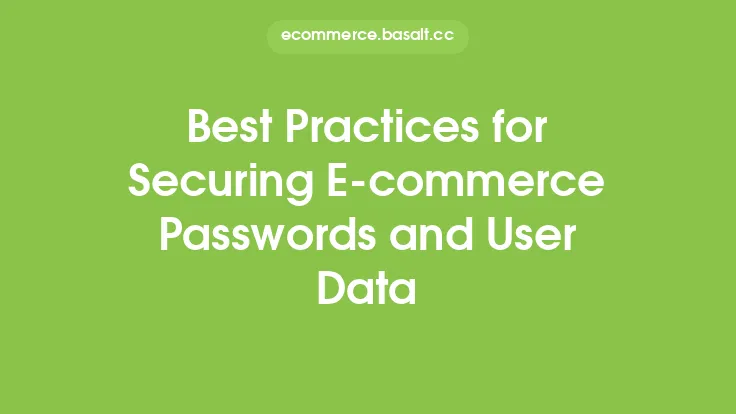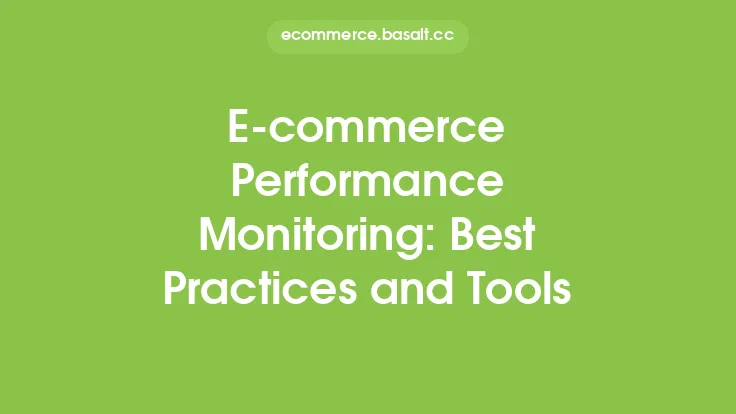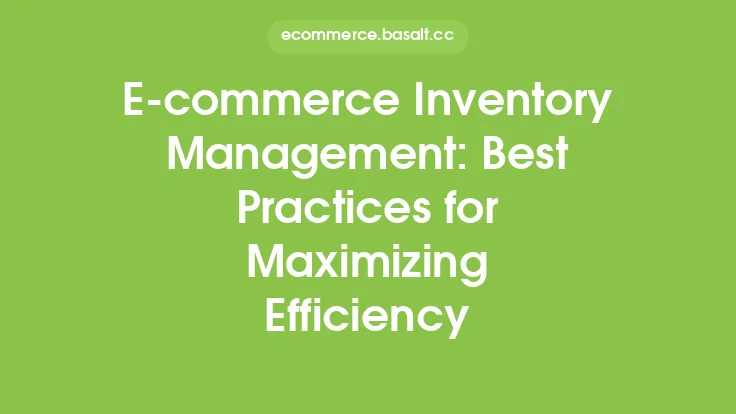E-commerce data analysis is a crucial aspect of any online business, as it provides valuable insights into customer behavior, sales trends, and market dynamics. By analyzing e-commerce data, businesses can identify areas of improvement, optimize their operations, and make informed decisions to drive growth and revenue. In this article, we will discuss the importance of e-commerce data analysis, provide tips and best practices for analyzing e-commerce data, and explore the benefits of using data analysis to inform business decisions.
Introduction to E-commerce Data Analysis
E-commerce data analysis involves the collection, analysis, and interpretation of data related to online sales, customer behavior, and market trends. This data can come from various sources, including website analytics tools, social media platforms, customer relationship management (CRM) software, and sales databases. By analyzing this data, e-commerce businesses can gain a deeper understanding of their customers, identify opportunities to improve sales and revenue, and optimize their marketing and sales strategies.
Types of E-commerce Data
There are several types of e-commerce data that businesses can analyze, including:
- Transactional data: This includes data related to sales, such as order value, product categories, and payment methods.
- Customer data: This includes data related to customer behavior, such as demographics, browsing history, and purchase history.
- Website data: This includes data related to website performance, such as page views, bounce rates, and conversion rates.
- Social media data: This includes data related to social media engagement, such as likes, shares, and comments.
- Market data: This includes data related to market trends, such as competitor analysis, market size, and growth rates.
Tips for E-commerce Data Analysis
To get the most out of e-commerce data analysis, businesses should follow these tips:
- Set clear goals and objectives: Before analyzing e-commerce data, businesses should define what they want to achieve, such as increasing sales or improving customer engagement.
- Use the right tools: There are many e-commerce analytics tools available, including Google Analytics, Adobe Analytics, and Salesforce Commerce Cloud. Businesses should choose the tools that best fit their needs and budget.
- Collect and integrate data: E-commerce data can come from various sources, including website analytics tools, social media platforms, and sales databases. Businesses should collect and integrate this data to get a comprehensive view of their customers and sales trends.
- Analyze and interpret data: Once data is collected and integrated, businesses should analyze and interpret it to identify trends, patterns, and insights.
- Take action: E-commerce data analysis is not just about collecting and analyzing data; it's about taking action based on the insights gained. Businesses should use data analysis to inform business decisions, such as optimizing marketing campaigns, improving website performance, and enhancing customer experience.
Best Practices for E-commerce Data Analysis
To ensure effective e-commerce data analysis, businesses should follow these best practices:
- Use data visualization: Data visualization is a powerful way to communicate complex data insights to stakeholders. Businesses should use data visualization tools, such as charts, graphs, and heat maps, to present data in a clear and concise manner.
- Segment data: Segmentation is a crucial aspect of e-commerce data analysis. Businesses should segment their data by demographics, behavior, and preferences to gain a deeper understanding of their customers.
- Use machine learning and AI: Machine learning and AI can help businesses analyze large datasets, identify patterns, and make predictions. Businesses should use machine learning and AI algorithms to analyze e-commerce data and gain insights that might not be apparent through traditional analysis methods.
- Continuously monitor and optimize: E-commerce data analysis is an ongoing process. Businesses should continuously monitor their data, analyze trends and patterns, and optimize their strategies to stay ahead of the competition.
Benefits of E-commerce Data Analysis
E-commerce data analysis offers numerous benefits, including:
- Improved sales and revenue: By analyzing e-commerce data, businesses can identify opportunities to improve sales and revenue, such as optimizing product pricing, improving website performance, and enhancing customer experience.
- Enhanced customer experience: E-commerce data analysis can help businesses understand their customers better, including their preferences, behavior, and pain points. This insight can be used to create personalized marketing campaigns, improve customer service, and enhance overall customer experience.
- Competitive advantage: E-commerce data analysis can help businesses stay ahead of the competition by identifying market trends, analyzing competitor activity, and optimizing marketing and sales strategies.
- Data-driven decision making: E-commerce data analysis provides businesses with the insights they need to make informed decisions. By analyzing data, businesses can identify areas of improvement, optimize their operations, and make data-driven decisions to drive growth and revenue.
Common Challenges in E-commerce Data Analysis
E-commerce data analysis can be challenging, especially for businesses that are new to data analysis or have limited resources. Some common challenges include:
- Data quality issues: Poor data quality can make it difficult to analyze e-commerce data accurately. Businesses should ensure that their data is accurate, complete, and consistent.
- Data integration: Integrating data from multiple sources can be challenging, especially if the data is in different formats or structures. Businesses should use data integration tools and techniques to combine their data into a single, unified view.
- Limited resources: E-commerce data analysis requires significant resources, including time, money, and expertise. Businesses should prioritize their data analysis efforts, focus on the most important metrics, and use automation and machine learning to streamline their analysis processes.
- Complexity: E-commerce data analysis can be complex, especially for businesses that have large datasets or complex sales processes. Businesses should use data visualization and machine learning to simplify their analysis and gain insights that might not be apparent through traditional analysis methods.
Future of E-commerce Data Analysis
The future of e-commerce data analysis is exciting, with new technologies and techniques emerging all the time. Some trends to watch include:
- Artificial intelligence and machine learning: AI and machine learning will play an increasingly important role in e-commerce data analysis, enabling businesses to analyze large datasets, identify patterns, and make predictions.
- Big data and analytics: The amount of e-commerce data available will continue to grow, and businesses will need to use big data and analytics techniques to analyze and interpret this data.
- Cloud computing: Cloud computing will become more prevalent in e-commerce data analysis, enabling businesses to store, process, and analyze large datasets in the cloud.
- Real-time analytics: Real-time analytics will become more important, enabling businesses to analyze and respond to customer behavior in real-time.
Conclusion
E-commerce data analysis is a critical aspect of any online business, providing valuable insights into customer behavior, sales trends, and market dynamics. By following the tips and best practices outlined in this article, businesses can get the most out of their e-commerce data analysis efforts and drive growth and revenue. Whether you're just starting out or are an experienced e-commerce professional, e-commerce data analysis is an essential tool for success in the digital age.





